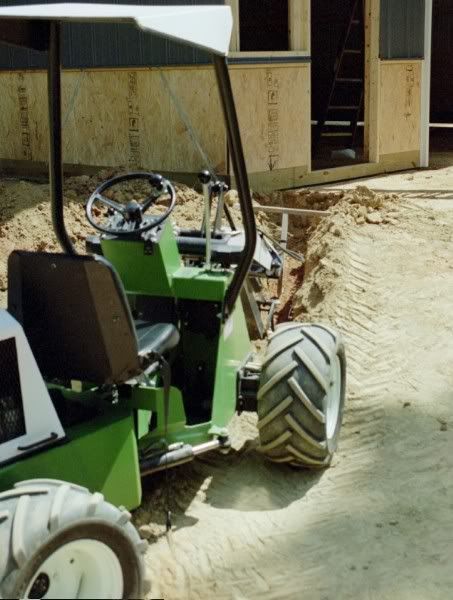J J and Others,
Just a point of clarification about using information from the Load-Inflation Pressure tables from tire manufactureres or from the Tire and Rim Association. When only one inflation pressure is given for a given ply rating, that is the MAXIMUM pressure allowed. It doesn't mean that is the recommended or required pressure. The required pressure is based on the maximum weight carried by the tire. With the notable exception of the front tires on loader tractors, most tires on compact tractors have much more load carrying capacity than is actually being used so the pressures do not have to be set at the maximum. The higher the inflation pressure, the more pressure is exerted on the soil and hence more compaction can be induced.
The average contact pressure on the surface is only a little higher (1-2 psi at most) than the inflation pressure in any tire. Note that the word AVERAGE is important here. Under lugs the pressure will be much higher, and in between, it will be much lower. The average is based on the entire oval area where the rubber covers the soil.
When inflated properly and carrying the weight of the loaded vehicle, the lugs touching the ground should make contact with a paved surface all the way out to the shoulders. This is a quick way to visually check if the inflation pressure is approximately correct. Of course if the vehicle is unloaded the contact area and lug contact will decrease.
The most accurate way to set inflation pressure is to use the Load-Inflation Tables for the tire size and ply rating (load rating for radials.) This requires knowing the weight being carried by each tire. For all practical purposes this can be done by weighing on platform scales. Using the actual load on a tire, you then consult the tables to determine the required inflation pressure for that load.
So for the specific tires in question, 26x12-12, the Load-Inflation Pressure tables indicate that for 2 ply tires the maximum load per tire is 1185 pounds and requires 10 psi; for 4 ply tires, the maximum load per tire is 1780 pounds and requires 20 psi. Even with the loader bucket full, the front tires (assuming 4 ply) on a 3900 pound PT should not require 20 psi. You need to weigh the front axle with the bucket full. Then divide by 2 if 2 front tires or 4 if with duals to determine the load per tire.
Maybe this is more than you wanted to know. Hope you weren't bored with the details.
JackIL

